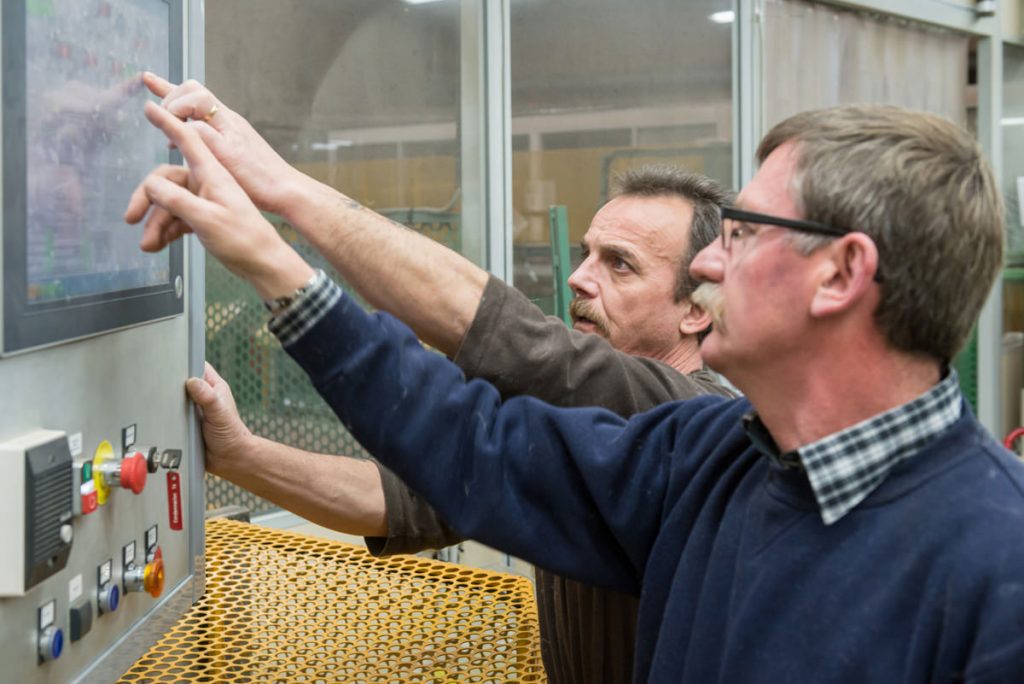
.Preparation of the bales
A perfect preparation of the bales of retted straw
Even if the farmers should bear the responsibility of this step, it has a significant impact on the flax fiber quality. The farmer shall mainly make sure about:
– Harvesting dry straw so as to avoid that the retting process goes on.
– A good distribution of the rolling-up ropes so as to facilitate the unrolling of the base at the scutching step.
– Maintaining a regular thickness of the straw layer to obtain a uniform scutching.

.Scutching settings
An adaptation of the scutching settings according to the vintage and to each specific lot
The scutching speed is closely linked to flax quality. At COMLIN, the ideal speed must allow to obtain a good ratio between scutched flax and scutched tows, and to produce clean fibers.

.Specific know-hows
There is no specific training for flax scutching, it is is organized internally. New comers work in pairs with an experimented operator. COMLIN pays a lot of attention to the preservation and transmission of scutching skills.
– The first requested ability for a scutching operator to touch and feel the material.
– Several years are necessary to get a full training for the operators so that they have a full knowledge of several vintages.

.Sorting
Sorting at the end of the scutching line
The operators sort the fibers at the end of the scutching line. They take out from the main lot the parts that are different in terms of color, length and cleanliness.

.Sampling
Regular sampling during scutching
Around 40 sample handles are made in a lot.

.Classifying method
A reference
COMLIN created the method.
– The sample lots are assessed accord to 5 criteria : nature, color, resistance, fineness, homogeneity.
– Each lot is analyzed separately. Two classifying commissions assess each lot: the first commission is made of sales people, the second one is made of scutching technicians and farmers. This second commission confirms the sales people assessment or not.